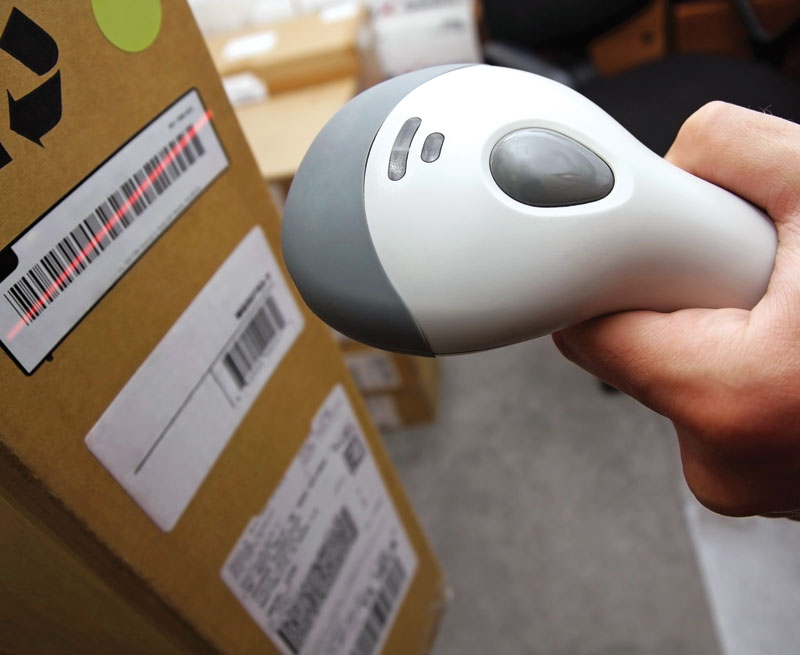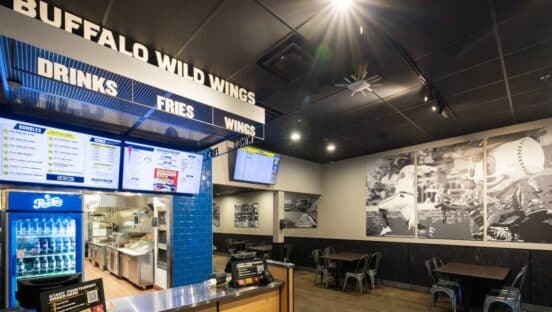For years, barcode technology has been commonplace in the retail sector, where it’s used to gather information about products, sales, and even consumer trends at various transaction points. But now, due to a major standardization initiative and broadening food-safety concerns, the same barcoding technology may be poised to catch on in the quick-service restaurant industry.
The impetus behind the barcoding movement comes from a foodservice initiative by GS1 U.S., an organization that advocates for standardization of data in various industries and sectors. In terms of foodservice standards, the motivation is to create efficiency, traceability, and a universal language for product information, all in the name of food safety.
“Marking cases using our standard … global unique number will help facilitate the movement of products through supply chains,” says Mary Wilson, senior director of standards management at GS1 U.S. “If you need to identify where a product is for whatever reason, it will allow you to track it back to the actual patch lot of that specific case.”
GS1 is a global standard for labeling products with certain information points, such as the name of the item and its production location, date, and lot number, all contained in a barcode. This standardized coding language can be spoken throughout the supply chain, allowing for product tracking from the producer to the restaurant.
“If I have an issue with a case of food or an issue that comes back to something that is or has been in my restaurant, I need to know all of [that] data,” says Brenda Lloyd, director of purchasing and distribution at the Unified Food Service Purchasing Co-op, the contracting and purchasing entity for Yum! Brands.
“If you see a recall of some kind or a withdrawal of a product, it normally comes down to one of those things,” she adds.
In many corners of the quick-service industry, that data is inconsistently captured. For instance, when a dozen crates of lettuce arrive at the back door of a fast-food joint, product information may be written down on a sheet of paper on a clipboard hanging near the door. In some cases, the data isn’t captured at all, leaving operators to rely on invoices when issues arise.
If products have a label containing a standardized barcode, the same fast-food operator can have employees use a scanner during deliveries and inventory checks. The information gathered from the scanned barcode can be easily relayed to a database that can be viewed on the office computer, ultimately allowing the operator to know precisely what’s in that same dozen crates of lettuce.
“I now know exactly what product it is,” says Dennis Harrison, the senior vice president for GS1 U.S. Foodservice who oversees the company’s involvement in the initiative. “When I say I know exactly what product it is, it’s just not a box of lettuce; it’s the type of lettuce, how many heads of lettuce are there, and the weight of the lettuce.”
This immediate access to granular data can alleviate operators’ tendency to be overly cautious when food-safety issues arise.
“Many times right now, when those issues come up, it takes us days … to go back through our records and go back through our supply-chain partners and answer those questions,” Lloyd says. “All of that time we are taking, the public is taking points off. Every day that these things hang out there, there’s a little less confidence.”
Barcoding can also allow fast-food operators to analyze their supply chain and to home in on bottlenecks that may be causing quality and safety issues. This would be especially true if the operator or distributor is scanning barcodes each time product is moved. The standard can also extend beyond back-of-the-house operations for quick-service operators, who can choose to share some of the stored product information with patrons.
“Customers want to know more and more about their food—things like nutritional values and allergens,” Harrison says. “People are now asking [when] they eat fish, ‘What ocean did it come from?’ There is this huge demand to know more about the products that we are eating.”
GS1 U.S. launched the foodservice standards initiative in the fall of 2009 in cooperation with the International Foodservice Distributors Association, the International Foodservice Manufacturers Association, and the National Restaurant Association.
In the beginning, the initiative involved 55 manufacturers, distributors, and operators in the restaurant industry. In three years, that number has grown to 91, with the ultimate goal to have 75 percent (based on revenue) of the foodservice industry using GS1 standards by 2015.
“We began in 2006 to look at [how to] electronically track the movement of our food,” Lloyd says. “We were looking at some of the business reasons to do that. One of the things that we saw was that many of the food-safety initiatives that have now come to fruition were coming.”
One of those safety initiatives came in the form of federal legislation. The Food Safety Modernization Act, signed into law at the beginning of 2011 by President Barack Obama, contains an electronic data capture provision.
Operators “are only going to be required to report more and more information,” Harrison says. “Either the customer is going to require it or the government is going to require it.”
Operators, Harrison says, should view the cost of scanners as an investment rather than an expense, as barcoding allows quick serves to accurately determine expiration dates and gives them better visibility of their inventory. Armed with accurate data, operators can more effectively create specials and discounts, allowing them to move older product and decrease waste in their establishments.












